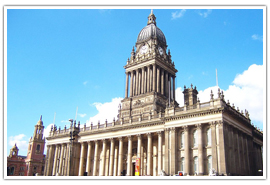On the first day of 2010, Slovenia had a population of 2,046,976, which is 0.7% more than one year earlier. At the beginning of 2009, 2,032,362 people lived in Slovenia. 12% of them were foreign-born.

In the first half of 2010, the number of the population decreased in one-third of all settlements and stayed the same in a quarter. The newly-established settlement Kerimov Grm in municipality Krško had a population of three.
In the second quarter of 2010, the population of Slovenia increased by 773. For the first time since they have prepared population data by the changed methodology, the number of foreign citizens decreased.
On 1 October 2010 Slovenia had a population of 2,048,951, which is 310 less than three months previously.
Over a third of the population lives in towns of more than ten thousand inhabitants. Slovenia’s largest town is its capital, Ljubljana. Other major towns are Maribor, Celje, Koper and Novo Mesto. Most people can at the same time enjoy some advantages of rural and urban lifestyles. Slovenes like to build holiday homes in natural settings, away from urban areas, in order to improve the quality of life. One of the most popular hobbies is gardening.
In 2009 the number men and women in both population groups increased, but the same cannot be said for the last quarter of the year. In that period the number of foreign men decreased for the first time since the fourth quarter of 2004. At the same time, the number of foreign women increased, which resulted in the third consecutive quarterly growth of the share of women among foreign citizens. At the beginning of 2010 women represented 26.9% of all foreigners.
The population of Slovenia is considered to be relatively homogeneous. The majority of those belonging to other ethnic groups only moved to Slovenia after the Second World War. Most people came here from other republics of the former Yugoslavia and found opportunities to work and raise families.
According to the Latest Census, the Current Make-up of the Population of Slovenia is:
- – Slovenes 83 %
- – Serbs 2%
- – Croats 1.8 %
- – Bosniacs and Muslims 1.6 %
- – Hungarians 0.3 %
- – Albanians 0.3 %
- – Macedonians 0.2 %
- – Montenegrins 0.15 %
- – Roma 0.17 %
- – Italians 0.1 %
Every twenty-fifth resident of Slovenia a foreigner. At the end of September 2009, Slovenia had a population of 2,045,901, consisting of 96.0% Slovenian citizens and 4.0% foreign citizens. In the third quarter of 2009, the population group of foreigners grew by 2.7%.
According to the findings on human development around the world in the Human Development Index, Slovenia in 2009 came 29th among 182 countries.
In Slovenia the number of live births has been increasing since 2004; in 2009 it was higher than when Slovenia won independence in 1991. The lowest number of live births after World War II was recorded in 2003; however, after 2004 the number started to rise.

